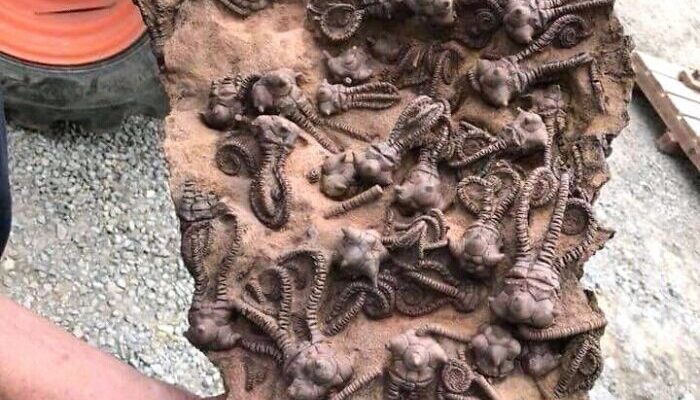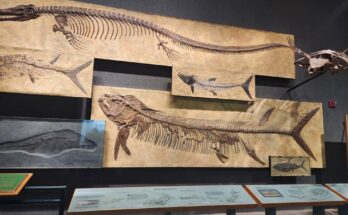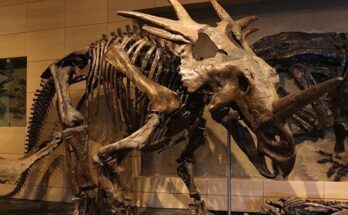A Glimpse into the Paleozoic Seas: Unearthing a Remarkable Crinoid Fossil Plate

This incredible image showcases a truly remarkable fossil specimen: a large plate densely covered with exquisitely preserved crinoids. Often referred to as “sea lilies” due to their plant-like appearance, crinoids are marine animals that belong to the phylum Echinodermata, making them relatives of starfish, sea urchins, and brittle stars.
The Specimen:
The fossil plate itself is a testament to an ancient marine environment where these fascinating creatures thrived. What makes this specimen particularly striking is the sheer number and excellent preservation of individual crinoid fossils. Each crinoid consists of several distinct parts:
- Holdfast: The base structure that anchored the crinoid to the seafloor, though often not fully visible in such dense accumulations.
- Stalk (Column): Composed of numerous disc-like ossicles (columnals) stacked together, giving the appearance of a segmented stem. Many of these stalks are clearly visible, extending upwards from the sediment.
- Calyx (Theca): The cup-shaped body that housed the crinoid’s vital organs. In this specimen, many calyces are wonderfully preserved, showing their characteristic bulbous or elongated forms.
- Arms: Branching structures that extended from the calyx, used for filter feeding. While some arm fragments are visible, the density of the calyces is the dominant feature.
The reddish-brown color of the rock matrix suggests the composition of the ancient seabed where these organisms were entombed. The three-dimensional relief of the fossils indicates that they were buried relatively rapidly, preserving their original forms before significant decay or compression.
Paleontological Significance:
Such a rich assemblage of crinoids on a single slab provides invaluable information for paleontologists:
- Paleoenvironmental Reconstruction: The presence of numerous crinoids often indicates a clear, shallow, and oxygen-rich marine environment with moderate currents, as these suspension feeders required a steady supply of nutrients.
- Taphonomy: The way the crinoids are preserved (e.g., articulated or disarticulated, upright or fallen) tells us about the conditions of their death and burial. The generally articulated state of many individuals on this plate suggests a rapid burial event, perhaps due to a storm or sediment slump, which entombed them relatively intact.
- Biodiversity: Such a dense concentration can give insights into the dominant species in a particular ecosystem during a specific geological period. While identifying species from this image alone is challenging, it highlights the abundance of crinoids in ancient seas.
- Stratigraphy: Crinoid fossils are excellent index fossils, meaning certain species are characteristic of particular geological time periods. This specimen, common in many Paleozoic deposits (especially Mississippian and Pennsylvanian periods), helps date the rock layers from which it was found.
Geological Context (Hypothetical based on common finds):
Fossil plates like this are frequently discovered in limestone and shale deposits worldwide, often dating back to the Paleozoic Era (approximately 541 to 252 million years ago). During this time, vast epicontinental seas covered much of the Earth, providing ideal habitats for marine invertebrates like crinoids. These “sea lilies” reached their peak diversity during the Mississippian Period, sometimes forming entire underwater “forests.”
Educational Value:
This image serves as a fantastic educational tool for understanding:
- Paleontology: The study of ancient life.
- Geology: The study of Earth’s history and structure.
- Evolution: Crinoids have a long and successful evolutionary history, with some species still living today, albeit in much deeper waters.
- Ecology: Understanding ancient marine ecosystems and food webs.
This fossil plate is not just a collection of ancient remains; it’s a window into a vibrant, ancient world, frozen in stone for us to marvel at and study. It speaks volumes about the dynamic history of life on Earth and the processes that preserve these incredible records over millions of years.



